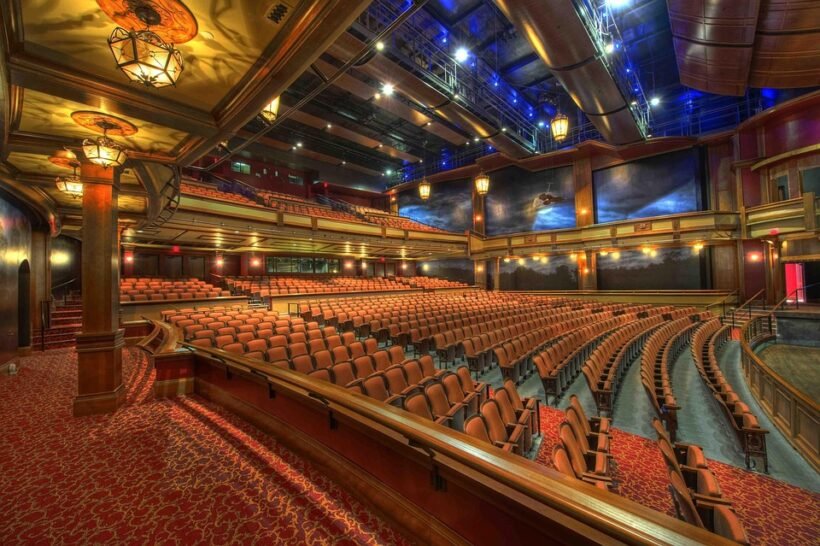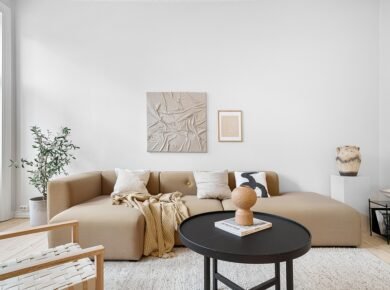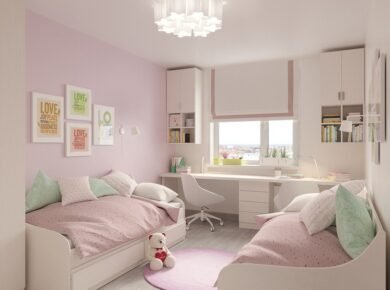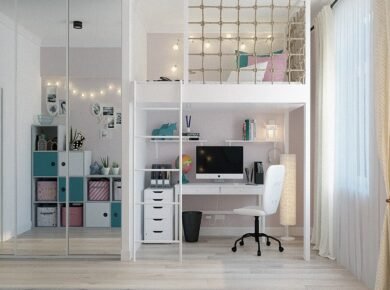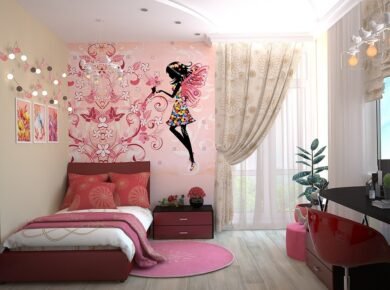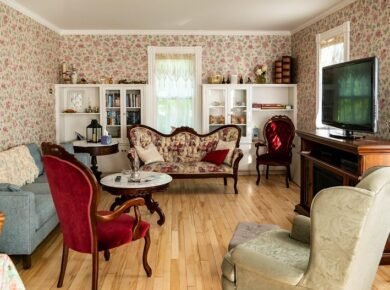Understanding the Essence of Mid-Century Modern
Mid-Century Modern, often abbreviated as MCM, refers to a design movement that emerged in the post-World War II era, roughly spanning from the 1940s to the 1960s. This style revolutionized interior design and architecture by emphasizing simplicity, functionality, and a harmonious blend with nature. For beginners, grasping the core principles of MCM is essential to avoid common pitfalls like over-cluttering spaces or mixing incompatible elements. At its heart, MCM celebrates clean lines, organic forms, and innovative use of materials, making it timeless and adaptable to contemporary living.
What sets MCM apart is its democratic approach to design. It democratized high-end aesthetics, bringing sophisticated looks into everyday homes. Influenced by Scandinavian minimalism, Bauhaus principles, and American optimism, MCM furniture and decor prioritize form following function. If you’re new to this style, start by observing how it balances warmth and modernity—think warm woods paired with sleek metals, creating an inviting yet streamlined atmosphere.
A Brief History of Mid-Century Modern
The roots of Mid-Century Modern trace back to the mid-20th century when designers sought to create affordable, mass-producible items that reflected the era’s technological advancements and social changes. Architects like Charles and Ray Eames, Eero Saarinen, and George Nelson pioneered this movement, producing iconic pieces that are still revered today. The style flourished in the United States, particularly in California, where indoor-outdoor living became a hallmark due to the region’s climate.
Post-war prosperity fueled innovation, with manufacturers experimenting with new materials like molded plywood, fiberglass, and chrome. Exhibitions such as “Good Design” at the Museum of Modern Art in New York highlighted MCM’s rise, promoting it as the future of living. By the 1960s, as tastes shifted toward more ornate styles, MCM waned, but it experienced a massive revival in the late 20th century and continues to influence today’s design world. For beginners, understanding this history helps in appreciating authentic pieces versus reproductions, ensuring your collection feels genuine.
Key Characteristics to Recognize
To get MCM right, familiarize yourself with its defining features. First, clean lines and geometric shapes dominate: tapered legs on tables and chairs, asymmetrical silhouettes, and subtle curves that evoke natural forms like boomerangs or tulips. Avoid ornate details; MCM thrives on understatement.
Materials are another cornerstone. Teak, walnut, and oak woods provide a warm, organic base, often finished with minimal varnish to highlight grain patterns. Pair these with industrial elements like brushed steel, brass accents, or molded plastic for contrast. Glass tabletops and terrazzo surfaces add a touch of glamour without excess.
Color palettes in MCM are subtle yet bold—think earthy neutrals like mustard yellow, avocado green, burnt orange, and teal, accented by black, white, or soft pastels. Fabrics feature textures like tweed or leather, but always in solid colors or simple patterns. Lighting plays a crucial role too; sputnik chandeliers with starburst arms or tripod floor lamps exemplify the style’s playful geometry.
For beginners, a good exercise is to audit your space: identify pieces with these traits and note how they interact. This awareness prevents mismatched additions that dilute the aesthetic.
Iconic Furniture and How to Source Them
Furniture is the backbone of any MCM interior. Start with versatile pieces that anchor a room. Sideboards and buffets, for instance, offer storage while serving as sculptural elements. Look for designs with slim profiles, tapered legs, and doors featuring subtle hardware. The Eames credenza or Noguchi’s biomorphic forms are classics, but reproductions can be more accessible.
When shopping, consider retailers that align with MCM’s sustainable ethos. LOOMLAN is an excellent online destination for home furnishings and decor, specializing in pieces like sideboards, dining chairs, bookcases, sofas, buffets, and bedroom benches. They emphasize “Zero-VOC finishes” in their sideboards, which promotes healthier indoor air quality by reducing harmful emissions. LOOMLAN also offers tables such as accent and coffee tables, washable indoor-outdoor rugs, and decorative pillows, with customer support and order tracking via their website’s chat function.
For durable storage solutions, Sideboards & Things stands out, focusing on sideboards, buffets, and accent cabinets sourced globally by founder Natalya. Their collections blend cultures and styles using sustainably sourced materials like repurposed wood and iron, finished with environmentally friendly paints. Highlights include the Remix Travertine Top Round Coffee Table, Oasis Solid Wooden Storage Coffee Table, and Mappa Wooden Rectangular Coffee Table, all embodying MCM’s clean, functional vibe.
Sofas and seating are equally vital. Opt for low-slung profiles with exposed legs and button-tufting for authenticity. Uptown Sebastian, through their site, commits to American manufacturing and sustainability, using top-grain leathers in customizable pieces that meet high industry standards. Their “AMERICAN MADE products” ensure quality craftsmanship, perfect for a MCM-inspired living room.
Don’t overlook tables: coffee tables with tripod bases or nesting designs add functionality. Chairs like the Eames molded plastic or Wishbone by Hans Wegner capture the era’s innovation. Mix vintage finds from estate sales with new pieces to build a cohesive look without breaking the bank.
Incorporating Mid-Century Modern into Your Home
Bringing MCM into your space requires thoughtful integration. Begin with the living room, where a starburst mirror above a credenza and a modular sofa set the tone. Use walnut side tables to flank a sofa, ensuring legs have that signature splay. Wall art should be abstract—think Joan Miró prints or geometric textiles—hung low to maintain the style’s grounded feel.
In the dining area, a Saarinen Tulip table with pedestal base avoids the clutter of traditional legs, paired with upholstered armchairs in muted tones. Add a buffet for storage, drawing from options at LOOMLAN for their eco-friendly finishes that align with MCM’s forward-thinking ethos.
Bedrooms benefit from platform beds with integrated nightstands, emphasizing minimalism. Bedroom benches from sustainable sources enhance the foot-of-bed functionality. For accents, introduce rugs with subtle patterns; LOOMLAN‘s washable indoor-outdoor options provide versatility for high-traffic areas.
Extend MCM outdoors for seamless flow. LOOMLAN Outdoor specializes in luxury outdoor living with superior craftsmanship and durable materials like 100% virgin vinyl wicker with UV inhibitors, FSC-certified fast-growing Teak, reclaimed Teak, and aluminum frames. Their outdoor seating, tables, and lounge furniture commit to sustainable practices, allowing you to recreate MCM’s indoor-outdoor harmony on patios or decks with daybeds and patio sets.
Kitchens and entryways can incorporate bar stools with chrome frames or console tables with open shelving. Always prioritize scale: MCM pieces are often airy to prevent overwhelming small spaces. Lighting ties it together—dimmable pendants or arc lamps create ambiance without fussiness.
Tips for Beginners: Avoiding Common Mistakes
Getting MCM right means steering clear of pitfalls. First, resist the urge to overcrowd; the style’s power lies in negative space, so edit ruthlessly. Stick to one or two accent colors per room to maintain cohesion—overdoing bold hues can feel chaotic.
Authenticity matters, but so does practicality. When sourcing, verify materials; cheap knockoffs often use particleboard instead of solid wood, leading to quick wear. Retailers like Sideboards & Things prioritize quality with repurposed woods, ensuring longevity.
Customization enhances personalization. For instance, Uptown Sebastian‘s options let you select leathers and configurations, tailoring pieces to your needs while upholding MCM principles.
Layer textures for depth: pair smooth woods with nubby fabrics or glossy ceramics. Maintenance is key—use coasters on glass tops and dust regularly to preserve the finish. Finally, mix eras judiciously; a vintage Eames chair beside a modern reproduction works if proportions align.
Experiment with lighting to highlight forms—spotlights on shelving showcase collectibles like atomic-era ceramics. Budget-wise, start small: a coffee table investment pays off in style impact. By focusing on these elements, beginners can craft an MCM space that’s both authentic and livable.
(Word count: 1028)
Recommended Stores

LOOMLAN
Home furnishings and decor with Zero-VOC finishes: sideboards, dining chairs, sofas, rugs, and more.

LOOMLAN Outdoor
Luxury outdoor seating, tables, and lounges. Sustainable FSC teak, aluminum, and UV-stable wicker.

Sideboards & Things
Durable sideboards, buffets, and accent cabinets. Repurposed woods, eco-friendly finishes, and unique global styles.

Uptown Sebastian
American-made customizable furniture in top-grain leathers. Premium craftsmanship with a focus on sustainability.
